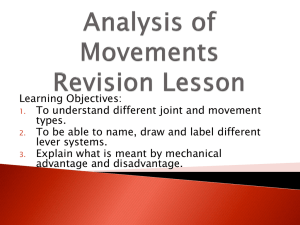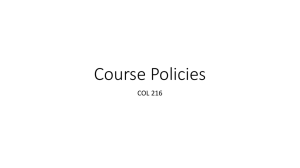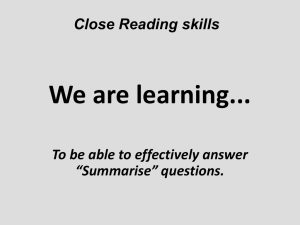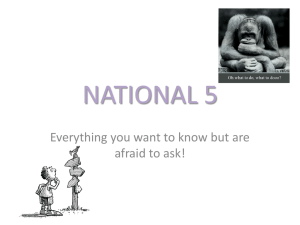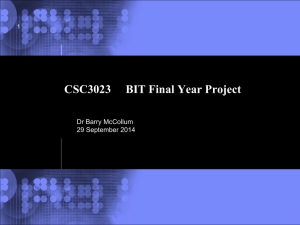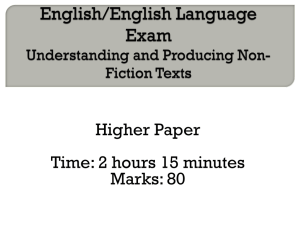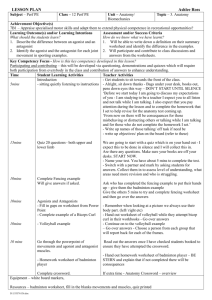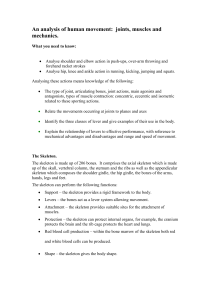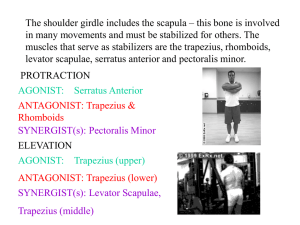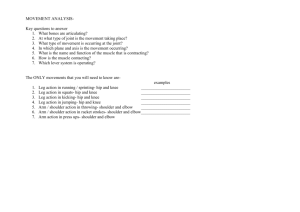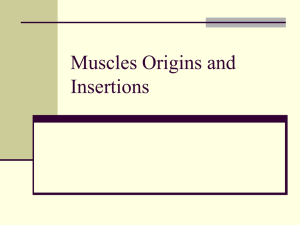File
advertisement
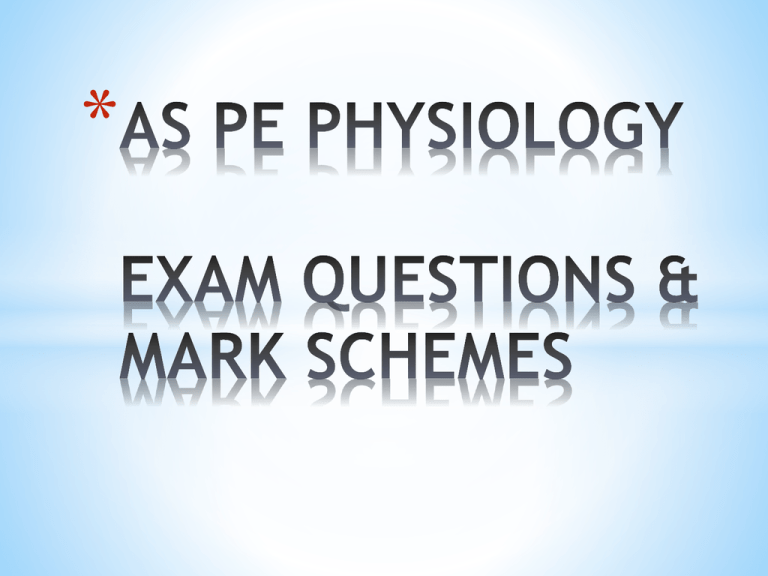
* * In order to perform to their potential, long jumpers must use their muscles and bones efficiently. Figure 1 shows a long jumper during the take-off phase of his jump. Figure 1: Using Figure 1, complete Table 1 to identify: (i) the joint actions involved at the hip and ankle of the take-off leg as the performer leaves the board, (3 marks) (ii) the names of the main agonists working at the knee and ankle. (3 marks) Joint Hip Knee Ankle (i) Joint action Hyperextension Extension Plantar flexion (i) Main agonist Gluteals Quadriceps Gastrocnemius Name, sketch and label the lever system operating at the ankle of the take-off foot. (3 marks) * Second class lever. (FRE) Resistance Fulcrum Effort Figure 2 shows how a gymnast pushes up from a headstand to a handstand. Figure 2. Position A Position B a) Name the main ‘agonist’ at the elbow joint in the movement from position A to position B. (1 mark) b) Name the ‘type of muscle contraction’ taking place while the gymnast is stationary at position A and through the movement phase to position B. (2 marks) a) * Triceps b) * Isometric contractions during position A. * Isotonic concentric contraction of triceps to move into position B. Name, sketch and label the lever system that is operating at the elbow during the movement from A to B (from previous question). (3 marks) * First class lever. (FRE) Fulcrum Resistance Effort Figure 3 shows a games player running. Figure 3: The player’s left leg is driving him forward. For the movement occurring at the knee joint of the drive leg, name: a) the ‘axis’ about which the movement is taking place. (1 mark) b) the main ‘agonist’ causing the movement. (1 mark) c) the ‘joint action’ taking place. (1 mark) a) * Transverse axis (and sagittal plane). b) * Quadriceps. c) * Extension In some games, players kick a ball to keep possession and/or to gain territory. Figure 4 shows a footballer kicking a ball. A B (a)What are the names of the articulating bones of the knee joint? (2 marks) (b)What joint action takes place at the knee of the kicking leg in the movement from position A to position B? (1 mark) (c) What is the name of the main agonist that causes this action in Figure 4? (1 mark) a) * Femur and tibia. b) * Extension. c) * Quadriceps Skilled performance is made possible through the effective use of lever systems. a) Sketch and label a third class lever system. (3 marks) b) In your diagram, draw and label the effort arm and the resistance arm. (2 marks) c) What are the advantages and disadvantages of third class levers over the other types of lever systems? (2 marks) * Third class lever. (FRE) Effort arm Fulcrum Resistance Effort Resistance arm c) * Third class lever has a shorter effort arm and a longer resistance arm. * This results in a mechanical disadvantage in terms of the amount of weight that can be lifted due to the short effort arm. * However, there is the mechanical advantage of a large range of movement and greater speed of movement due to long resistance arm. The diagram shows a tennis player performing a ground stroke. A B C D Complete the table below to explain the movement occuring in the right arm from position B to D. (6 marks) Joint Action Main agonist Plane and Axis Shoulder Horizontal flexion Anterior deltoids and pectorals Transverse plane / longitudinal axis Elbow Extension to flexion Triceps then biceps Sagittal plane / transverse axis The diagram shows a weight trainer performing a squat exercise. Use the diagram to fill in the table below. (12 marks) Downward Phase Joint Joint Action Main Agonist Flexion Gluteals Upward Phase Type of Joint contraction Action Main Agonist Type of contraction Eccentric Gluteals Concentric Quadriceps Concentric Hip Knee Flexion Quadriceps Eccentric Extension Extension The diagram shows a rugby player throwing the ball for a line out. Complete the table below to identify the movements taking place during the withdrawal phase and throwing phase of the skill. (4 marks) Withdrawal Phase Throwing Phase Withdrawal Phase Joint Elbow Joint Action Flexion Main Agonist Biceps Throwing Phase Joint Action Extension Main Agonist Triceps



